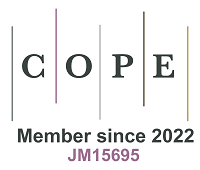REFERENCES
2. MacDonald ME, Ambrose CM, Duyao MP, et al. A novel gene containing a trinucleotide repeat that is expanded and unstable on Huntington’s disease chromosomes. Cell 1993;72:971-83.
4. Kremer B, Goldberg P, Andrew SE, et al. A worldwide study of the Huntington’s disease mutation: the sensitivity and specificity of measuring CAG repeats. N Engl J Med 1994;330:1401-6.
5. Nguyen QTR, Ortigoza Escobar JD, Burgunder JM, et al. Combining literature review with a ground truth approach for diagnosing Huntington’s disease phenocopy. Front Neurol 2022;13:817753.
6. Tabrizi SJ, Scahill RI, Owen G, et al. TRACK-HD Investigators. Predictors of phenotypic progression and disease onset in premanifest and early-stage Huntington’s disease in the TRACK-HD study: analysis of 36-month observational data. Lancet Neurol 2013;12:637-49.
7. Ferguson MW, Kennedy CJ, Palpagama TH, Waldvogel HJ, Faull RLM, Kwakowsky A. Current and possible future therapeutic options for Huntington’s disease. J Cent Nerv Syst Dis 2022;14:11795735221092517.
8. Bachoud-Lévi AC, Ferreira J, Massart R, et al. International guidelines for the treatment of Huntington’s disease. Front Neurol 2019;10:710.
9. Huntington G. On Chorea. 1872. Available from: https://hdsa.org/wp-content/uploads/2017/08/On-Chorea.pdf. [Last accessed on 27 Feb 2024].
10. Bates GP. History of genetic disease: the molecular genetics of Huntington disease - a history. Nat Rev Genet 2005;6:766-73.
11. Rubinsztein DC, Leggo J, Coles R, et al. Phenotypic characterization of individuals with 30-40 CAG repeats in the Huntington disease (HD) gene reveals HD cases with 36 repeats and apparently normal elderly individuals with 36-39 repeats. Am J Hum Genet 1996;59:16-22.
12. Kremer B, Almqvist E, Theilmann J, et al. Sex-dependent mechanisms for expansions and contractions of the CAG repeat on affected Huntington disease chromosomes. Am J Hum Genet 1995;57:343-50.
13. Monckton DG. The contribution of somatic expansion of the CAG repeat to symptomatic development in Huntington’s disease: a historical perspective. J Huntingtons Dis 2021;10:7-33.
14. Duyao M, Ambrose C, Myers R, et al. Trinucleotide repeat length instability and age of onset in Huntington’s disease. Nat Genet 1993;4:387-92.
15. Modifiers of Huntington’s Disease (GeM-HD) Consortium. CAG repeat not polyglutamine length determines timing of Huntington’s disease onset. Cell 2019;178:887-900.e14.
16. Kim MO, Takada LT, Wong K, Forner SA, Geschwind MD. Genetic PrP prion diseases. Cold Spring Harb Perspect Biol 2018;10:a033134.
17. Nafe R, Arendt CT, Hattingen E. Human prion diseases and the prion protein - what is the current state of knowledge? Transl Neurosci 2023;14:20220315.
18. Margolis RL, Holmes SE, Rosenblatt A, et al. Huntington’s disease-like 2 (HDL2) in North America and Japan. Ann Neurol 2004;56:670-4.
19. Krause A, Mitchell C, Essop F, et al. Junctophilin 3 (JPH3) expansion mutations causing Huntington disease like 2 (HDL2) are common in South African patients with African ancestry and a Huntington disease phenotype. Am J Med Genet B Neuropsychiatr Genet 2015;168:573-85.
20. Margolis RL, O’Hearn E, Rosenblatt A, et al. A disorder similar to Huntington’s disease is associated with a novel CAG repeat expansion. Ann Neurol 2001;50:373-80.
21. Kambouris M, Bohlega S, Al-Tahan A, Meyer BF. Localization of the gene for a novel autosomal recessive neurodegenerative Huntington-like disorder to 4p15.3. Am J Hum Genet 2000;66:445-52.
22. Nakamura K, Jeong SY, Uchihara T, et al. SCA17, a novel autosomal dominant cerebellar ataxia caused by an expanded polyglutamine in TATA-binding protein. Hum Mol Genet 2001;10:1441-8.
23. Stevanin G, Brice A. Spinocerebellar ataxia 17 (SCA17) and Huntington’s disease-like 4 (HDL4). Cerebellum 2008;7:170-8.
24. Rossi M, Hamed M, Rodríguez-Antigüedad J, et al. Genotype-phenotype correlations for ATX-TBP (SCA17): MDSGene systematic review. Mov Disord 2023;38:368-77.
25. DeJesus-Hernandez M, Mackenzie IR, Boeve BF, et al. Expanded GGGGCC hexanucleotide repeat in noncoding region of C9ORF72 causes chromosome 9p-linked FTD and ALS. Neuron 2011;72:245-56.
26. Renton AE, Majounie E, Waite A, et al. ITALSGEN Consortium. A hexanucleotide repeat expansion in C9ORF72 is the cause of chromosome 9p21-linked ALS-FTD. Neuron 2011;72:257-68.
27. Beck J, Poulter M, Hensman D, et al. Large C9orf72 hexanucleotide repeat expansions are seen in multiple neurodegenerative syndromes and are more frequent than expected in the UK population. Am J Hum Genet 2013;92:345-53.
28. Hensman Moss DJ, Poulter M, Beck J, et al. C9orf72 expansions are the most common genetic cause of Huntington disease phenocopies. Neurology 2014;82:292-9.
29. Alva-Diaz C, Alarcon-Ruiz CA, Pacheco-Barrios K, et al. C9orf72 hexanucleotide repeat in Huntington-like patients: systematic review and meta-analysis. Front Genet 2020;11:551780.
30. Sattler R, Traynor BJ, Robertson J, et al. Attendees of the inaugural C9ORF72 FTD/ALS Summit. Roadmap for C9ORF72 in frontotemporal dementia and amyotrophic lateral sclerosis: report on the C9ORF72 FTD/ALS summit. Neurol Ther 2023;12:1821-43.
31. Wardle M, Morris HR, Robertson NP. Clinical and genetic characteristics of non-Asian dentatorubral-pallidoluysian atrophy: a systematic review. Mov Disord 2009;24:1636-40.
32. Madeo M, Stewart M, Sun Y, et al. Loss-of-function mutations in FRRS1L lead to an epileptic-dyskinetic encephalopathy. Am J Hum Genet 2016;98:1249-55.
33. van der Knaap MS, Barth PG, Gabreëls FJ, et al. A new leukoencephalopathy with vanishing white matter. Neurology 1997;48:845-55.
34. Snell RG, MacMillan JC, Cheadle JP, et al. Relationship between trinucleotide repeat expansion and phenotypic variation in Huntington’s disease. Nat Genet 1993;4:393-7.
35. Rubinsztein DC, Leggo J, Chiano M, et al. Genotypes at the GluR6 kainate receptor locus are associated with variation in the age of onset of Huntington disease. Proc Natl Acad Sci U S A 1997;94:3872-6.
36. Lee JH, Lee JM, Ramos EM, et al. Registry Study of the European Huntington’s Disease Network; Huntington Study Group COHORT project. TAA repeat variation in the GRIK2 gene does not influence age at onset in Huntington’s disease. Biochem Biophys Res Commun 2012;424:404-8.
37. Genetic Modifiers of Huntington’s Disease (GeM-HD) Consortium. Identification of genetic factors that modify clinical onset of Huntington’s disease. Cell 2015;162:516-26.
38. Lee JM, Chao MJ, Harold D, et al. A modifier of Huntington’s disease onset at the MLH1 locus. Hum Mol Genet 2017;26:3859-67.
39. Orth M, Handley OJ, Schwenke C, et al. European Huntington’s Disease Network. Observing Huntington’s disease: the European Huntington’s Disease Network’s REGISTRY. J Neurol Neurosurg Psychiatry 2011;82:1409-12.
40. Moss DJH, Pardiñas AF, Langbehn D, et al. TRACK-HD investigators; REGISTRY investigators. Identification of genetic variants associated with Huntington’s disease progression: a genome-wide association study. Lancet Neurol 2017;16:701-11.
41. Flower M, Lomeikaite V, Ciosi M, et al. TRACK-HD Investigators; OPTIMISTIC Consortium. MSH3 modifies somatic instability and disease severity in Huntington’s and myotonic dystrophy type 1. Brain 2019;142:1876-86.
42. Kennedy L, Evans E, Chen CM, et al. Dramatic tissue-specific mutation length increases are an early molecular event in Huntington disease pathogenesis. Hum Mol Genet 2003;12:3359-67.
43. Kacher R, Lejeune FX, Noël S, et al. Propensity for somatic expansion increases over the course of life in Huntington disease. Elife 2021;10:e64674.
44. Kennedy L, Shelbourne PF. Dramatic mutation instability in HD mouse striatum: does polyglutamine load contribute to cell-specific vulnerability in Huntington’s disease? Hum Mol Genet 2000;9:2539-44.
45. Hong EP, MacDonald ME, Wheeler VC, et al. Huntington’s disease pathogenesis: two sequential components. J Huntingtons Dis 2021;10:35-51.
46. Hong EP, Chao MJ, Massey T, et al. Association analysis of chromosome X to identify genetic modifiers of Huntington’s disease. J Huntingtons Dis 2021;10:367-75.
47. Ellis N, Tee A, McAllister B, et al. Genetic risk underlying psychiatric and cognitive symptoms in Huntington’s disease. Biol Psychiatry 2020;87:857-65.
48. Barbier M, Davoine CS, Petit E, et al. Intermediate repeat expansions of TBP and STUB1: genetic modifier or pure digenic inheritance in spinocerebellar ataxias? Genet Med 2023;25:100327.
49. Li A, Yao S, Liu J, Qi X, Duan F, Sun C. Dilemma in differentiation of spinocerebellar ataxia type 17 from Huntington’s disease: comorbidity or independent disease? Int J Neurosci 2023:1-9.
50. Laffita-Mesa JM, Nennesmo I, Paucar M, Svenningsson P. A novel duplication in ATXN2 as modifier for spinocerebellar ataxia 3 (SCA3) and C9ORF72-ALS. Mov Disord 2021;36:508-14.
51. Warby SC, Montpetit A, Hayden AR, et al. CAG expansion in the Huntington disease gene is associated with a specific and targetable predisposing haplogroup. Am J Hum Genet 2009;84:351-66.
52. Warby SC, Visscher H, Collins JA, et al. HTT haplotypes contribute to differences in Huntington disease prevalence between Europe and East Asia. Eur J Hum Genet 2011;19:561-6.
53. Apolinário TA, Rodrigues DC, Lemos MB, Antão Paiva CL, Agostinho LA. Distribution of the HTT gene A1 and A2 haplotypes worldwide: a systematic review. Clin Med Res 2020;18:145-52.
54. Li XY, Li HL, Dong Y, et al. Haplotype analysis encompassing HTT gene in Chinese patients with Huntington’s disease. Eur J Neurol 2020;27:273-9.
55. Squitieri F, Mazza T, Maffi S, et al. Tracing the mutated HTT and haplotype of the African ancestor who spread Huntington disease into the Middle East. Genet Med 2020;22:1903-8.
56. Ruiz de Sabando A, Urrutia Lafuente E, Galbete A, et al; Spanish HD Collaborative group. Spanish HTT gene study reveals haplotype and allelic diversity with possible implications for germline expansion dynamics in Huntington disease. Hum Mol Genet 2023;32:897-906.
57. Dawson J, Baine-Savanhu FK, Ciosi M, Maxwell A, Monckton DG, Krause A. A probable cis-acting genetic modifier of Huntington disease frequent in individuals with African ancestry. HGG Adv 2022;3:100130.
58. Kolli N, Lu M, Maiti P, Rossignol J, Dunbar GL. CRISPR-Cas9 mediated gene-silencing of the mutant Huntingtin gene in an in vitro model of Huntington’s disease. Int J Mol Sci 2017;18:754.
59. Helm J, Schöls L, Hauser S. Towards personalized allele-specific antisense oligonucleotide therapies for toxic gain-of-function neurodegenerative diseases. Pharmaceutics 2022;14:1708.
60. Fang L, Monteys AM, Dürr A, et al. Haplotyping SNPs for allele-specific gene editing of the expanded huntingtin allele using long-read sequencing. HGG Adv 2023;4:100146.
61. Berger SL, Kouzarides T, Shiekhattar R, Shilatifard A. An operational definition of epigenetics. Genes Dev 2009;23:781-3.
62. Ratovitski T, Kamath SV, O’Meally RN, et al. Arginine methylation of RNA-binding proteins is impaired in Huntington’s disease. Hum Mol Genet 2023;32:3006-25.
63. Ghafouri-Fard S, Khoshbakht T, Hussen BM, Taheri M, Ebrahimzadeh K, Noroozi R. The emerging role of long non-coding RNAs, microRNAs, and an accelerated epigenetic age in Huntington’s disease. Front Aging Neurosci 2022;14:987174.
64. Horvath S, Langfelder P, Kwak S, et al. Huntington’s disease accelerates epigenetic aging of human brain and disrupts DNA methylation levels. Aging 2016;8:1485-512.
65. Barbé L, Finkbeiner S. Genetic and epigenetic interplay define disease onset and severity in repeat diseases. Front Aging Neurosci 2022;14:750629.
66. Gardiner SL, Boogaard MW, Trompet S, et al. Prevalence of carriers of intermediate and pathological polyglutamine disease-associated alleles among large population-based cohorts. JAMA Neurol 2019;76:650-6.
67. Faquih TO, Aziz NA, Gardiner SL, et al. Normal range CAG repeat size variations in the HTT gene are associated with an adverse lipoprotein profile partially mediated by body mass index. Hum Mol Genet 2023;32:1741-52.
68. Gardiner SL, de Mutsert R, Trompet S, et al. Repeat length variations in polyglutamine disease-associated genes affect body mass index. Int J Obes 2019;43:440-9.
69. Gardiner SL, Trompet S, Sabayan B, et al. Repeat variations in polyglutamine disease-associated genes and cognitive function in old age. Neurobiol Aging 2019;84:236.e17-28.
70. Gardiner SL, van Belzen MJ, Boogaard MW, et al. Huntingtin gene repeat size variations affect risk of lifetime depression. Transl Psychiatry 2017;7:1277.
71. McColgan P, Thobhani A, Boak L, et al. GENERATION HD1 Investigators. Tominersen in adults with manifest Huntington’s disease. N Engl J Med 2023;389:2203-5.
72. Goldman JS, Uhlmann WR, Naini AB, Klitzman RL, Marder KS. Genetic testing of HTT modifiers for Huntington’s disease: considerations for clinical guidelines. Mov Disord 2023;38:2151-4.
73. Kim R, Seong MW, Oh B, et al. Analysis of HTT CAG repeat expansion among healthy individuals and patients with chorea in Korea. Parkinsonism Relat Disord 2024;118:105930.
74. Jiang H, Sun YM, Hao Y, et al. Chinese HD Network. Huntingtin gene CAG repeat numbers in Chinese patients with Huntington’s disease and controls. Eur J Neurol 2014;21:637-42.
75. MacDonald ME, Vonsattel JP, Shrinidhi J, et al. Evidence for the GluR6 gene associated with younger onset age of Huntington’s disease. Neurology 1999;53:1330-2.
76. Holbert S, Denghien I, Kiechle T, et al. The Gln-Ala repeat transcriptional activator CA150 interacts with huntingtin: neuropathologic and genetic evidence for a role in Huntington’s disease pathogenesis. Proc Natl Acad Sci U S A 2001;98:1811-6.
77. Nazé P, Vuillaume I, Destée A, Pasquier F, Sablonnière B. Mutation analysis and association studies of the ubiquitin carboxy-terminal hydrolase L1 gene in Huntington’s disease. Neurosci Lett 2002;328:1-4.
78. Arning L, Kraus PH, Valentin S, Saft C, Andrich J, Epplen JT. NR2A and NR2B receptor gene variations modify age at onset in Huntington disease. Neurogenetics 2005;6:25-8.
79. Zeng W, Gillis T, Hakky M, et al. Genetic analysis of the GRIK2 modifier effect in Huntington’s disease. BMC Neurosci 2006;7:62.
80. Metzger S, Bauer P, Tomiuk J, et al. The S18Y polymorphism in the UCHL1 gene is a genetic modifier in Huntington’s disease. Neurogenetics 2006;7:27-30.
81. Panegyres PK, Beilby J, Bulsara M, Toufexis K, Wong C. A study of potential interactive genetic factors in Huntington’s disease. Eur Neurol 2006;55:189-92.
82. Kishikawa S, Li JL, Gillis T, et al. Brain-derived neurotrophic factor does not influence age at neurologic onset of Huntington’s disease. Neurobiol Dis 2006;24:280-5.
83. Arning L, Saft C, Wieczorek S, Andrich J, Kraus PH, Epplen JT. NR2A and NR2B receptor gene variations modify age at onset in Huntington disease in a sex-specific manner. Hum Genet 2007;122:175-82.
84. Andresen JM, Gayán J, Cherny SS, et al. US-Venezuela Collaborative Research Group. Replication of twelve association studies for Huntington’s disease residual age of onset in large Venezuelan kindreds. J Med Genet 2007;44:44-50.
85. Metzger S, Rong J, Nguyen HP, et al. Huntingtin-associated protein-1 is a modifier of the age-at-onset of Huntington’s disease. Hum Mol Genet 2008;17:1137-46.
86. Arning L, Monté D, Hansen W, et al. ASK1 and MAP2K6 as modifiers of age at onset in Huntington’s disease. J Mol Med 2008;86:485-90.
87. Weydt P, Soyal SM, Gellera C, et al. The gene coding for PGC-1alpha modifies age at onset in Huntington’s disease. Mol Neurodegener 2009;4:3.
88. Dhaenens CM, Burnouf S, Simonin C, et al. Huntington French Speaking Network. A genetic variation in the ADORA2A gene modifies age at onset in Huntington’s disease. Neurobiol Dis 2009;35:474-6.
89. Metzger S, Saukko M, Van Che H, et al. Age at onset in Huntington’s disease is modified by the autophagy pathway: implication of the V471A polymorphism in Atg7. Hum Genet 2010;128:453-9.
90. Tsai YC, Metzger S, Riess O, Soehn AS, Nguyen HP. Genetic analysis of polymorphisms in the kalirin gene for association with age-at-onset in European Huntington disease patients. BMC Med Genet 2012;13:48.
91. Lobanov SV, McAllister B, McDade-Kumar M, et al. REGISTRY Investigators of the European Huntington’s disease network; PREDICT-HD Investigators of the Huntington Study Group. Huntington’s disease age at motor onset is modified by the tandem hexamer repeat in TCERG1. NPJ Genom Med 2022;7:53.
92. Karadima G, Dimovasili C, Koutsis G, Vassilopoulos D, Panas M. Age at onset in Huntington’s disease: replication study on the association of HAP1. Parkinsonism Relat Disord 2012;18:1027-8.
93. Kloster E, Saft C, Epplen JT, Arning L. CNR1 variation is associated with the age at onset in Huntington disease. Eur J Med Genet 2013;56:416-9.
94. Valcárcel-Ocete L, Alkorta-Aranburu G, Iriondo M, et al. REGISTRY investigators of the European Huntington’s Disease Network. Exploring genetic factors involved in Huntington disease age of onset: E2F2 as a new potential modifier gene. PLoS One 2015;10:e0131573.
95. Li JL, Hayden MR, Almqvist EW, et al. A genome scan for modifiers of age at onset in Huntington disease: the HD MAPS study. Am J Hum Genet 2003;73:682-7.
96. Li JL, Hayden MR, Warby SC, et al. Genome-wide significance for a modifier of age at neurological onset in Huntington’s disease at 6q23-24: the HD MAPS study. BMC Med Genet 2006;7:71.







